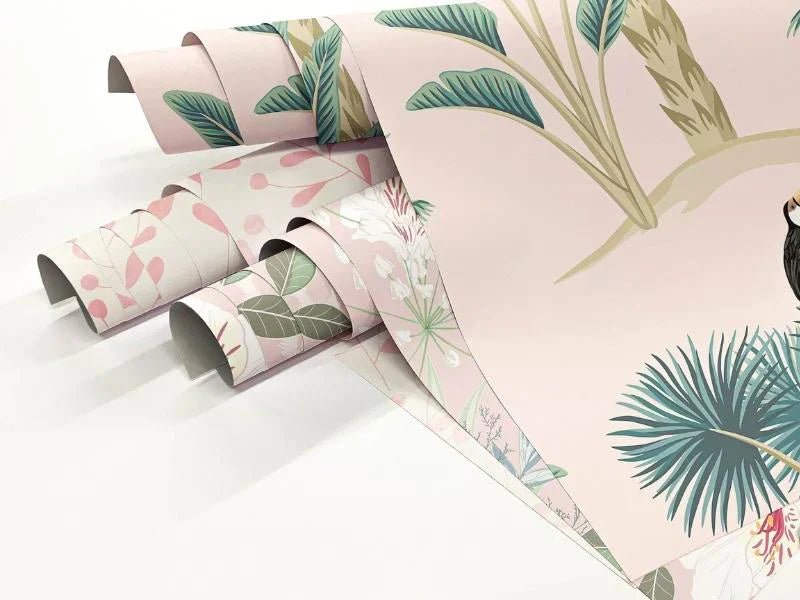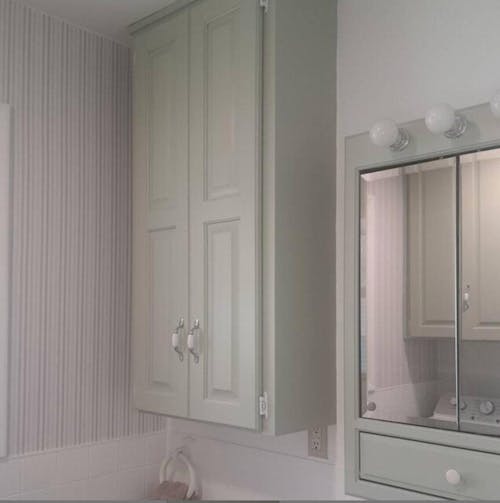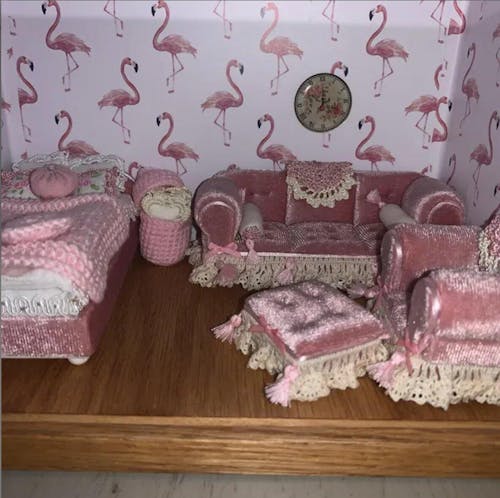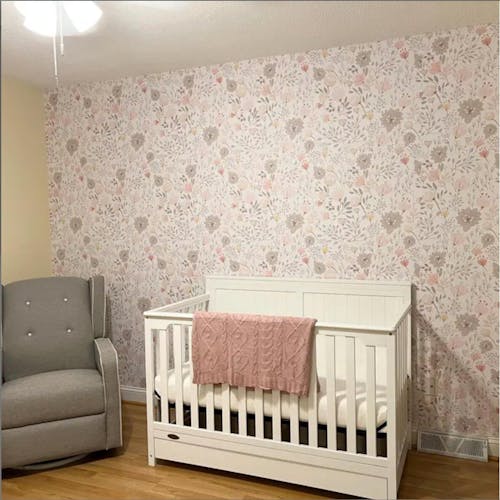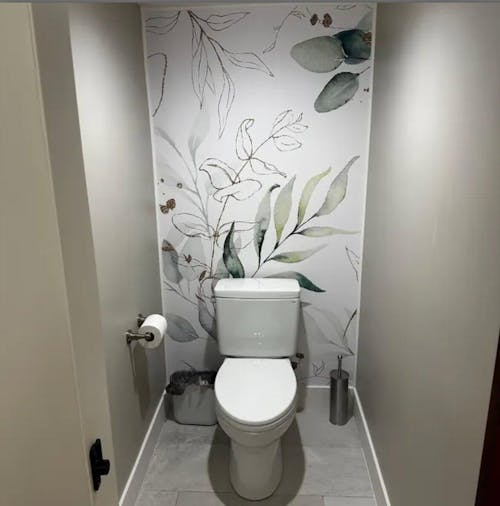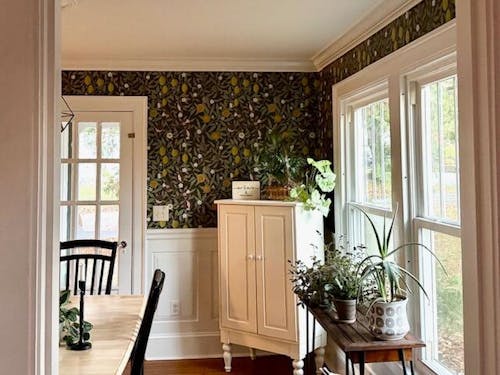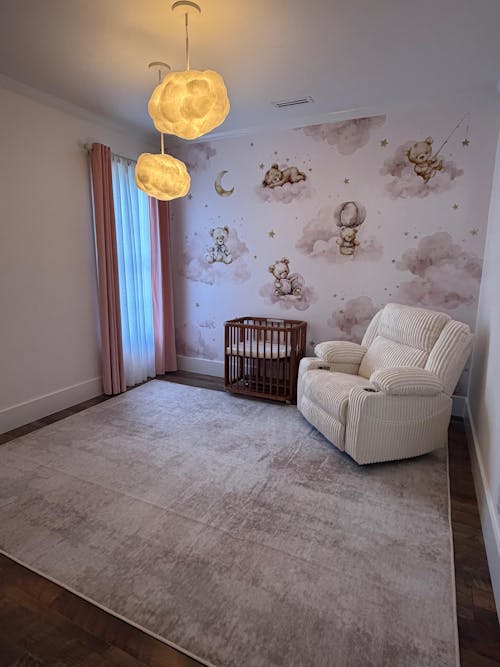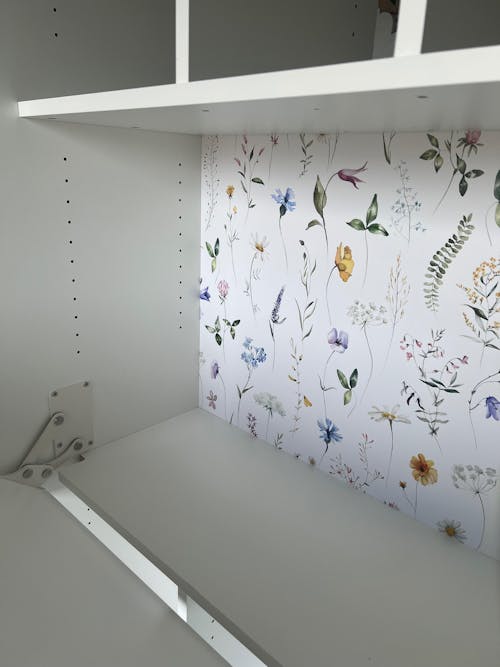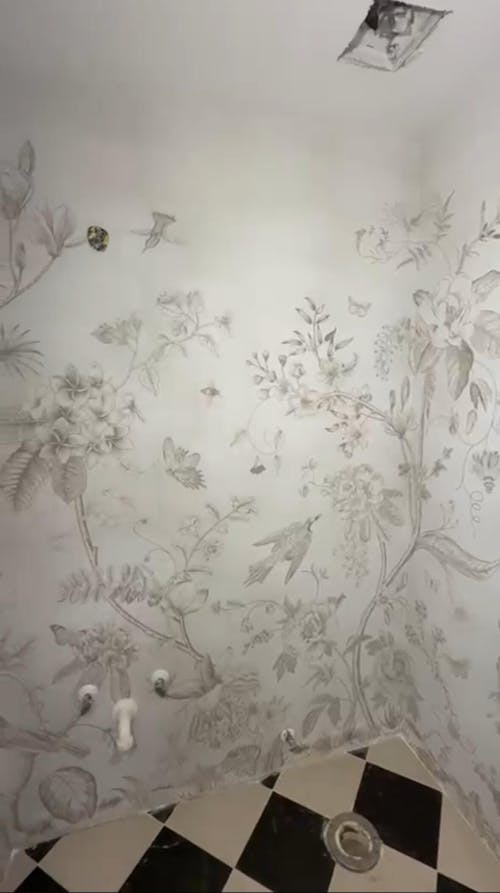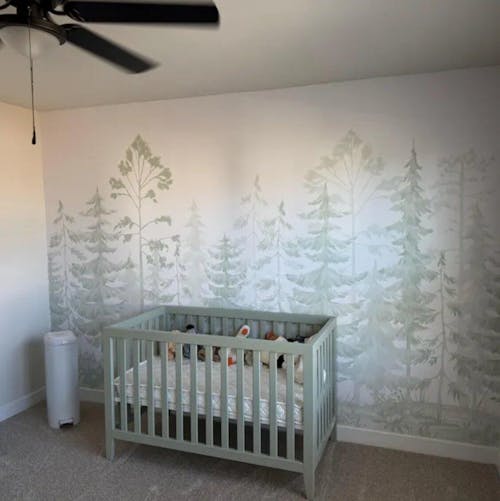Removing old peel and stick wallpaper might seem like a messy, intimidating task. But don’t worry: with the right tools, techniques, and a little patience, taking off wallpaper can be a straightforward and even satisfying part of refreshing your space.
Whether you're prepping for a new design or just saying goodbye to an old pattern, this guide will help you remove your wallpaper cleanly, safely, and with minimal frustration.
A Step-by-Step Guide
Before you begin the process of removing peel and stick wallpaper, it's important to gather the necessary tools and materials. Here's a list of items you'll need:
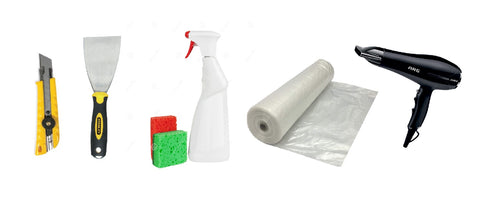
- Utility knife - help you create a starting point for removing the wallpaper by lifting a corner or seam.
- Hairdryer - applying heat to the wallpaper helps loosen the adhesive, making it easier to peel off.
- Putty knife or scraper - useful for gently lifting and removing the wallpaper, especially if it doesn't come off easily.
- Spray bottle and sponge - use a damp sponge to moisten the wallpaper during the removal process.
- Plastic drop cloth - to protect the floor or surrounding areas from debris.
Step 1: Starting at a corner or seam, gently peel back the wallpaper
- Begin the removal process by locating a corner or seam of the peel and stick wallpaper.
- Using your fingers or a utility knife, carefully lift the corner to create a starting point for removal.
- Slowly peel back the wallpaper, taking care to avoid tearing or damaging the underlying surface.
Step 2: Applying heat to loosen the adhesive (using a hairdryer or heat gun)
- If the wallpaper doesn't come off easily, apply heat to the surface using a hairdryer on a low setting.
- Hold the heat source a few inches away from the wallpaper and move it back and forth to evenly distribute the heat.
- The heat will help soften the adhesive, making it easier to remove the wallpaper.
Step 3: Slowly and steadily peeling off the wallpaper, maintaining a 180-degree angle
- Once the adhesive is loosened, continue peeling off the wallpaper, maintaining a 180-degree angle.
- Pull the wallpaper downward and away from the wall, applying gentle pressure as needed.
- Take your time to avoid any tearing or leaving behind residue.
Step 4: Addressing any stubborn or residual adhesive
- After removing the removable wallpaper, you may encounter stubborn or residual adhesive on the wall.
- Use a putty knife or scraper to gently scrape off any remaining adhesive. Be careful not to damage the wall surface.
- If necessary, dampen a sponge or cloth with warm water and mild dish soap to help remove any stubborn residue.
Step 5: Cleaning the wall surface after wallpaper removal
- Once all the wallpaper and adhesive are removed, clean the wall surface to ensure a smooth and clean finish.
- Use a damp cloth or sponge to wipe down the wall, removing any leftover residue or cleaning solution.
- Allow the wall to dry completely before applying new wallpaper or making any repairs.
What to Avoid When Removing Peel and Stick Wallpaper
❌ Ripping wallpaper off quickly
❌ Using metal tools
❌ Applying too much heat or water
❌ Skipping wall prep before installation
Peel and Stick Wallpaper Removal Problems
Improper removal or even certain wall conditions can result in stubborn residue, wall damage, and unnecessary frustration.
Stubborn Adhesive Residue
Stubborn adhesive residue can be a common challenge when removing peel and stick wallpaper. This sticky residue may remain on the wall even after the wallpaper has been peeled off. To address this issue:
Solution:
- Start by gently scraping off as much of the residue as possible using a plastic putty knife or scraper.
- Apply a commercial wallpaper adhesive remover or a mixture of warm water and mild dish soap to the affected area.
- Allow the solution to sit for a few minutes to loosen the adhesive.
- Use a sponge or cloth to gently scrub the residue, working in small sections.
- Rinse the wall with clean water and wipe it dry.
Difficulty in Peeling Off The Wallpaper
Sometimes, peel and stick wallpaper may not come off easily, leading to difficulties in the removal process. This can be due to factors such as improper installation or the quality of the wallpaper adhesive.
Solution:
- Apply heat to the wallpaper using a hairdryer on a low heat setting or a heat gun. This helps soften the adhesive and make the wallpaper more pliable for easier removal.
- Use a plastic putty knife or scraper to gently lift the edges of the wallpaper. Be cautious not to damage the underlying wall surface.
- Slowly peel off the wallpaper, applying additional heat or using a wallpaper adhesive remover if necessary.
- Work in small sections, taking your time to ensure a clean removal without causing any damage to the wall.
Uneven or damaged wall surface
Uneven or damaged wall surfaces can pose a challenge when removing peel and stick wallpaper, especially if they were not properly prepared before installation.
Solution:
Assess the extent of the wall damage. If there are minor imperfections, you can use a spackling compound or joint compound to fill in the gaps or holes.
FAQs: Peel and Stick Wallpaper Removal
❓ Is it easy to remove peel and stick wallpaper?
Yes, if it was properly installed and the wall was prepped. However, poor-quality wallpaper or unprimed walls can make it difficult.
❓ Can peel and stick wallpaper be reused?
Some high-quality versions may be reusable if removed carefully, but generally, reuse isn’t recommended.
❓ Will it damage the paint?
It can, especially if the paint is old or if no primer was used before installation. Always peel slowly and use heat.
Final Thoughts
So, is it easy to remove peel and stick wallpaper? The answer is: it can be — if you know what to expect and how to handle potential issues. From sticky residue to unexpected wall damage, knowing how to take off peel and stick wallpaper the right way will save you time, stress, and repair costs.
Treat your walls with care, follow proper removal techniques, and enjoy the freedom that temporary wallpaper offers.
